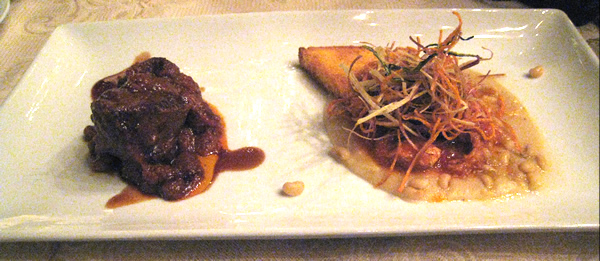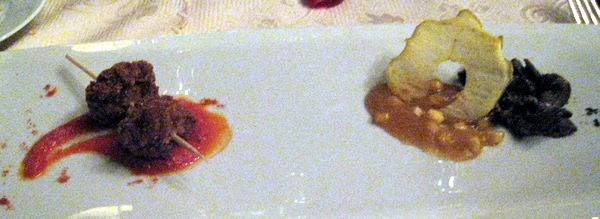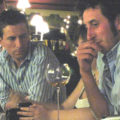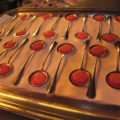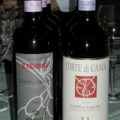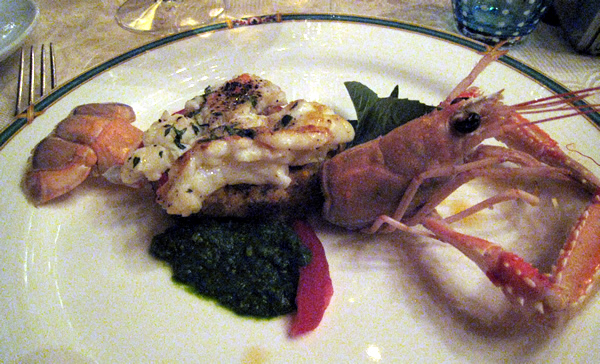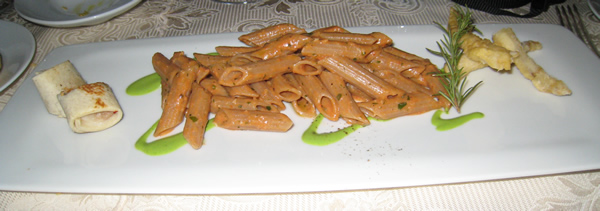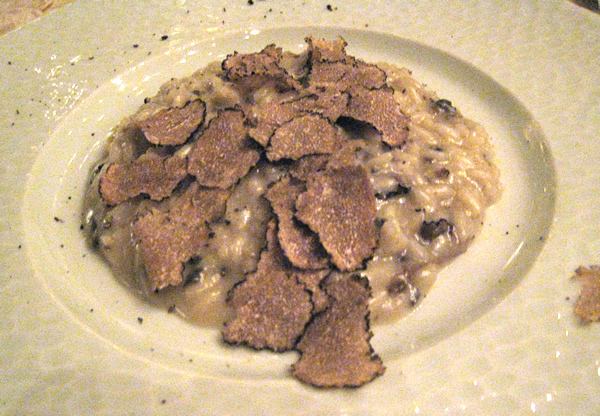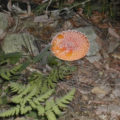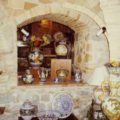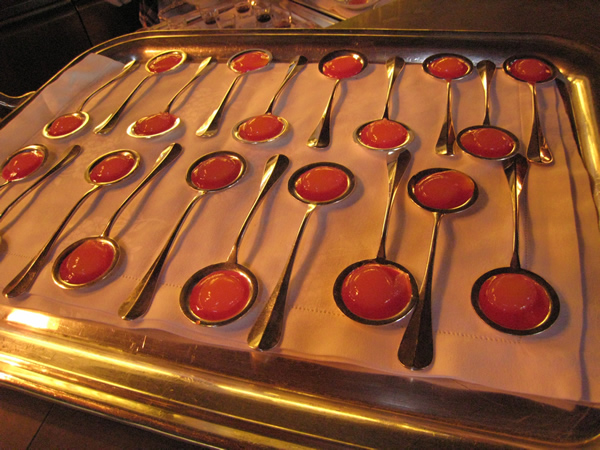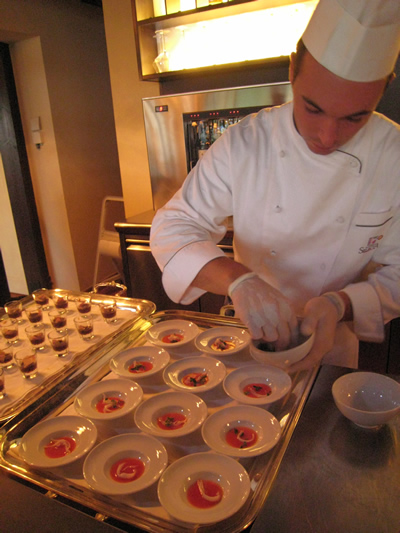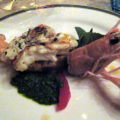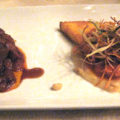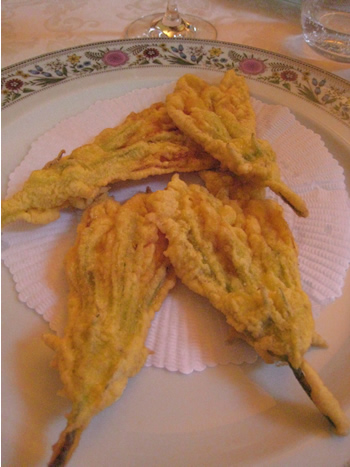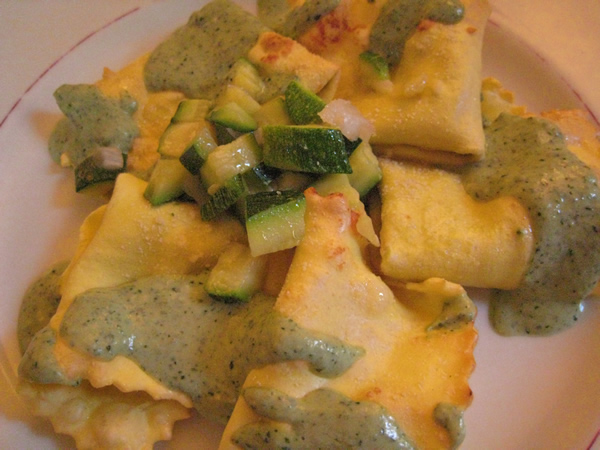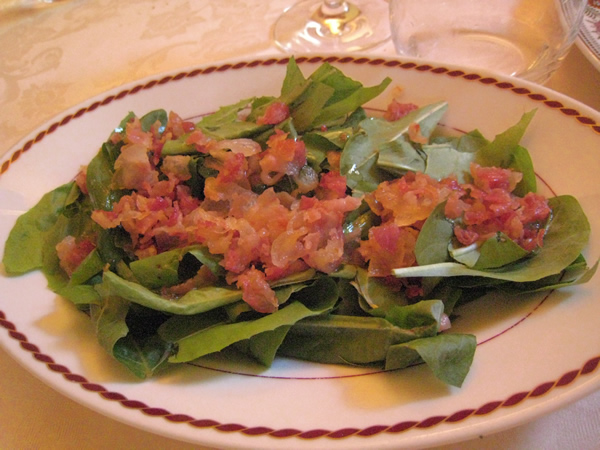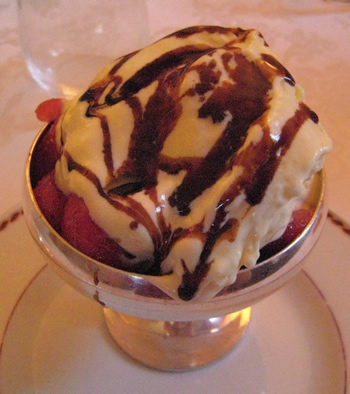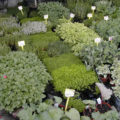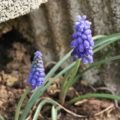For the secondi (entree course), Sara had decided to challenge her guests with a Degustazione di Frattaglie. Degustazione means “tasting” or “sampler”. Frattaglie are… innards. (I believe in English they are sometimes called euphemistically “sweetbreads”.)
This used to be considered peasant food: the parts of the animal left over after the nobles had taken the choicer muscle meats (haunch, shoulder, filet, etc.). There are traditional dishes based on organ meats in probably all Italian regions. Next-door Abruzzo, for example, features la mazzarella, a mix of organs including (I’m pretty sure someone told me) lung. Trippa (tripe) is traditional in Rome, the Veneto is famous for fegato (liver).
It was clear from the menu that Symposium’s recipes would take these “poor” foods and dress them up in grand style. I still wasn’t sure I would like them, but I decided to be brave (those who chose not to try the frattaglie were served rabbit).
Shown above is the first sampler plate:
- left: Fegato di vitello con aceto balsamico e uva passa (veal liver with balsamic vinegar and dried grapes) – I usually like liver, so had no trouble with this although it was cut into largeish chunks that were still pink on the inside, instead of the thin, brown-throughout slices that most of us think of when we imagine eating liver. The sweet-sour sauce was a perfect accompaniment.
- right: Trippa alla Canapina con pecorino di fossa e vellutata di fagioli bianchi (tripe alla Canapina – I don’t know what that means – with aged sheep’s milk cheese and a velouté of white beans). Nope, sorry. I tried it, but I just can’t take tripe. It’s intestine, after all, and it tastes to me like what’s been in it. Others at the table loved it, in fact my seat mate Carlo was happy to finish my portion.
Then came:
- left: Palle di Toro fritte con salsa di paprika dolce (fried bull balls with a sweet paprika sauce). I was most curious about these; I’d heard of “Rocky Mountain Oysters” and such but never had occasion to try them. In this case, they mostly tasted fried, and had a rubbery texture in the mouth that wasn’t particularly pleasant. And these couldn’t really be bull balls, could they? Surely no self-respecting bull has testicles that tiny? More likely these are calf balls, leftovers from early castration (yes, I know my male readers really wanted that mental picture…well, you’re stuck with it now).
- right: Rognone con mele e calvados (kidney with apple and calvados). I’d never had kidney before, and can now testify that it doesn’t do much for me. The sauce of apples, cinnamon, and apple brandy was yummy.
Once again I donated to my neighbors, though we were all getting very full by this time.
This course was served with a very good Pinot Nero Alto Adige doc 2002. I don’t have particular skills in describing wines, but I know what I like: heavy, complex reds like this one. It was nobody’s fault that one bottle was corked; in fact, this provided an opportunity to demonstrate what Enrico and I learned years ago in a Slow Food wine-tasting course: women’s noses are far more sensitive to corked wine than men’s.
It was also the occasion for Chef Lucio to talk about how he loses 5% of his stock this way, and synthetic corks would be better for everybody, but market tests have shown that customers make the snobbish (and wrong) assumption that real cork is more elegant. (In our wine course we learned that the most effective way to seal wine would actually be a cap like you find on a beer bottle – I can just imagine the howls of outrage from wine snobs about that!)
There was plenty of time between courses to digest, and watch the preparation of the next course, which reminded me of demonstrations in a science museum as it involved liquid nitrogen.
This was used on a dish called Gorgo: Gelato al gorgonzola malghese, granita di sedano, pere calde padellate con la sua acquavite, salsa al porto: ice cream made of gorgonzola cheese, with a celery granita (the liquid nitrogen was used to instant-freeze celery liquid for this), pan-sauteed pears with pear liqueur, and port sauce. There were also granules of port gelatin and slivers of celery. (I didn’t manage to get a comprehensible photo of this creation, in spite of trying three different camera settings.)
If you approached this dish expecting dessert flavors, it would be a rude surprise. If, instead, you prepared yourself for a cheese course perfect for a hot summer night, it was wonderful. I ate it with bread.
With this we had a rather wonderful passito (a sweet dessert wine made from dried grapes) called Ramandolo docg 2003. It was a lovely amber color (see below – that’s Susan hiding behind), and was not cloyingly sweet as passiti often are. Must arrange to have more of that one of these days…
We also had a mini-sampler of two local cheeses, one goat and one sheep, each served with a dollop of well-mated fruit sauce.

